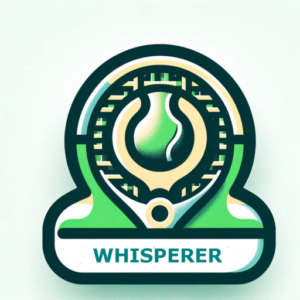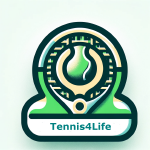Dark Arts of Tennis: The Guerrilla Psychology
Dark Arts of Tennis: The Guerrilla Psychology
Welcome to the Mind Games
In soccer, the “dark arts” of away games are legendary — pink dressing rooms to lower testosterone, cold showers, toilets without paper. All legal. All deliberate. All designed to disrupt.
Tennis, though devoid of home-field manipulation, plays its own mind games. It’s a solo sport where the battlefield is psychological, and every edge matters. When you can’t control the court, you control the climate of the match — emotionally, mentally, and rhythmically.
Dark Arts: The Silent War Before the First Serve
Where soccer bends the environment, tennis bends your nervous system. It’s not about bending rules — it’s about bending rhythm, momentum, and perception.
Let’s break down the most common tactics — and the players who’ve made them famous:
Tactical Grunting
A disruptive grunt isn’t just noise — it’s timing interference.
-
Maria Sharapova turned it into a battle cry. Her piercing, extended grunts added pressure, especially at key moments.
-
Rafael Nadal uses it rhythmically, his grunts intensifying with point importance, signaling grit and urgency.
-
Aryna Sabalenka‘s guttural explosiveness matches her ball-striking, sending a message: you’re in for a war.
Grunting can mask contact timing, delay opponent reaction, and inject psychological discomfort. It’s primal — and unfortunately perfectly legal.
Deliberate Delays
Ball bounces, towel walks, shoelace ties — all designed to break your flow and reset theirs.
-
Novak Djokovic‘s 10+ ball bounces before a pressure serve aren’t superstition — they’re control tactics.
-
Victoria Azarenka has used medical timeouts and extended towel breaks to flip the emotional script mid-match.
-
Daniil Medvedev applies tempo manipulation like a scalpel — slowing play down, then suddenly rushing, creating a reactive trap.
The goal? To own the match’s tempo — not just the points.
Psychological Projection
From clenched jaw to racket toss, even controlled anger can be a performance — a bluff to alter your perception of control.
-
John McEnroe was the original chaos conductor. His legendary tirades and umpire blowups weren’t just rage — they were rhythm disruptors and energy absorbers, pulling opponents into emotional turbulence.
-
Andy Murray’s muttering and grimacing suggest struggle, but he uses it to mask energy resets and tactical recalibration.
-
Serena Williams wields emotion with intention — fist pumps, primal screams, and stare-downs that signal a turning tide.
In all cases, what looks like emotion is often just excellent theater — a calculated move to disrupt and dominate.
Gear Flexing
A pristine kit, polished racquets, and symmetrical bag layout — it’s not just preparation, it’s psychological dominance: “I belong here more than you.”
-
Roger Federer was the master — stepping onto court with crisp whites, matching bags, and no rush. His presence was intimidation.
-
Iga Świątek follows suit — methodical, clean, every racquet laid like a surgeon’s tool kit.
-
Carlos Alcaraz, though young, exudes polish and presence. When he walks out, you can feel the “I’ve arrived” energy.
Even before the warm-up ends, the opponent is reminded who’s in control.
The Off-Court Aura and the Circle of Privacy
The real mental match begins off the court — in practice areas, club spaces, and even parking lots — long before the first ball is struck.
Elite players guard an invisible circle of privacy: a psychological buffer that shields their routine, identity, and self-belief. When that space is breached — even subtly — it can rattle focus, spike anxiety, and expose mental vulnerability.
Some players build their fortress in silence. Think Nadal — headphones on, eyes fixed forward, aura untouchable. Others command space with presence — like Medvedev, loud, unpredictable, and impossible to ignore.
I remember playing John Newcombe, whose signature move after a big point was to stride confidently toward the net — closing space, sending a message. Today’s versions are just as bold: the stare-down, the emphatic “come on!”, or even the infamous finger to the face.
The tactic may change, but the message remains: “I control the narrative.” And if you don’t defend your mental space with purpose, your opponent will claim it for themselves.
Where Soccer and Tennis Intersect
Both sports use psychological disruption to create a home advantage — one literally, one emotionally.
-
In soccer: cold showers, hot locker rooms, spatial discomfort.
-
In tennis: strategic delays, emotional projection, off-court presence, and gear signaling.
In both cases, the fight for momentum begins before the action — not at kickoff or first serve, but in the mental cues that shape performance.
Your Mental Armor
So how do you defend yourself?
-
Control the Ritual: Build identity-driven routines. Your behaviors should reinforce who you are: calm, focused, ready.
-
Defend Your Space: Recognize when your circle of privacy is being challenged — and respond with composure, not reactivity, don’t engage!
-
Leverage Pressure Tools: Use techniques like the left-hand ball squeeze pre-serve to calm the nervous system and reset your mental state.
Wrap: The Match Starts Long Before the Serve
You might never face pink paint or cold showers — but if you’re competing seriously, you will face the dark arts.
They’ll come at you subtly — a smirk here, a pause there, a grunt that feels just a second off.
Master these cues — not to mimic, but to neutralize.
Because in competitive tennis, the real match often begins when no one’s watching — and only those who recognize the game within the game walk away with the win.
“Never let them beat you without a racket.”
– The Tennis Whisperer



